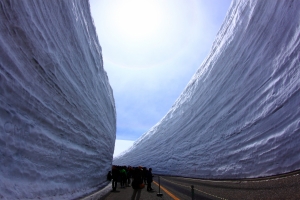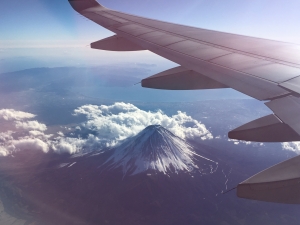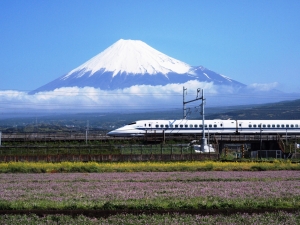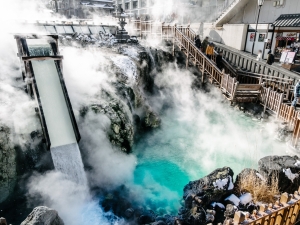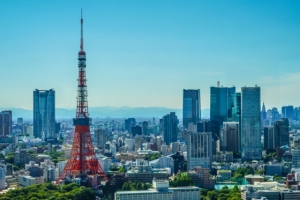About Osaka
Osaka (大阪) is one of the most dynamic cities in Japan. As a commercial center and harbor city, Osaka has more than 1 thing to discover. The street food and nightlife scene are some of the best in the country, the people are some of the most colorful, the history is some of the longest, and the numerous covered shopping arcades have some of the most interesting things. It is a city worth visiting.
The city is the second biggest in Japan and is spread out over a vast area. There is much to see and do in all districts of Osaka, with the main attractions explained below:
Shin-Osaka
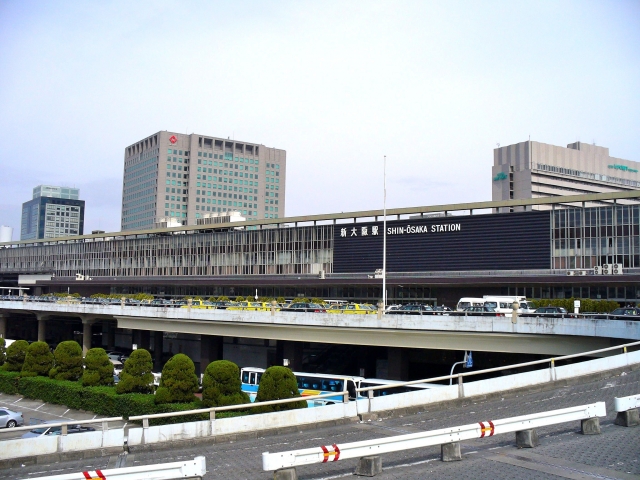
Shin-Osaka is where most people make their entrance into Osaka as it is the main Shinkansen station. It is however, not a place to hang around, as the area is an office jungle mostly frequented by businessmen.
North (Kita) and Umeda Osaka
Besides Shin-Osaka, this area is one of the major gateways into the city, with the JR Osaka Station building in the center of the district. The station is surrounded by office buildings, department stores, cafes and restaurants.
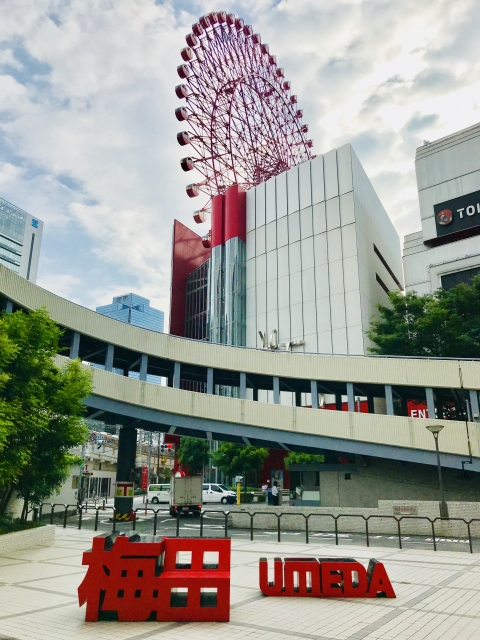
The most beloved department store is Hep Five, a department store with a 106-meter-high Ferris wheel (¥500) from where you have an amazing view over the city
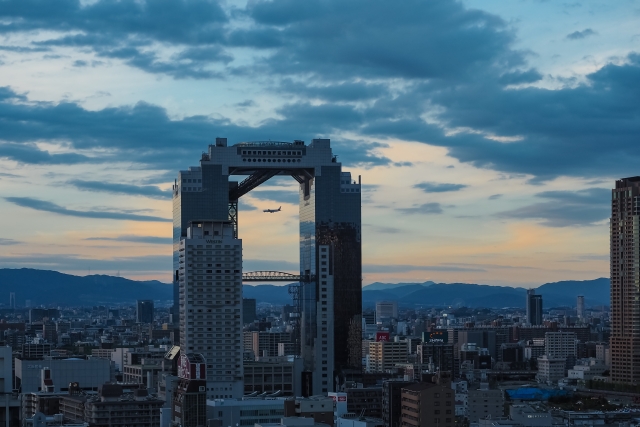
A 10-minute walk from JR Osaka Station is the Umeda Sky Building, one of the major entry-points for those traveling by bus. This skyscraper is one of the most recognizable in Osaka, with 2 tall buildings connected by a bridge at the top. For a small fee you can get to the Garden in the Sky (or Kuchu Teien), as the top floor of the building is called. The view from here is spectacular, especially at night. If you don’t feel like paying, entrance to one of the floors below Kuchu Teien is for free, and the view from there is still spectacular!
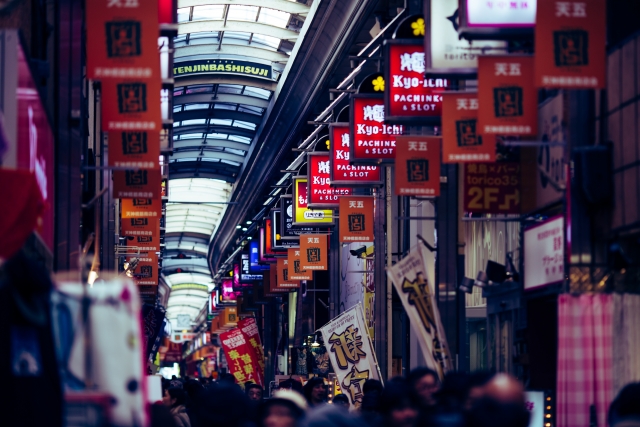
For those who love shopping, the Tenjinbashi-suji Street is your place. This street is one of the many roof-covered shopping arcade or shotengai that Osaka is famous for. The shops and restaurants are reminiscent of decades past, and the arcade is the longest in Osaka. One end of the arcade is near the Kids Plaza Osaka, a science museum where children can learn while playing.
South (Minami) Osaka: Namba (難波)

Osaka is known as the food hub of Japan and called ‘Japan’s Kitchen’. There’s all sorts of small shops that offer Osaka staples such as okonomiyaki, takoyaki, and kushi-age. The best of those small eateries can be found in the Minami District around Namba Station, the traditional commercial and entertainment district of Osaka, at Dotombori, Shinsaibashi and Amerika-mura. You can find the best places for food and shopping here.
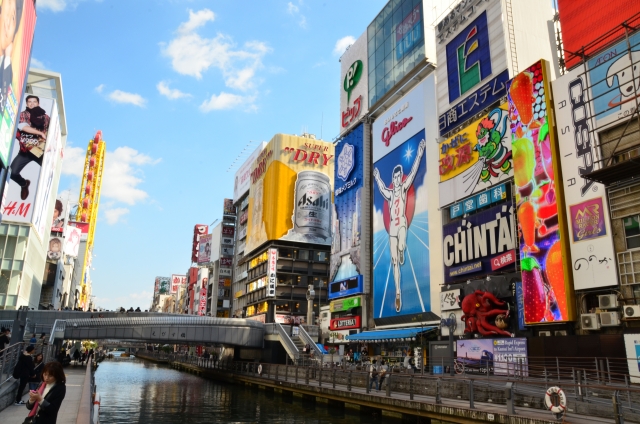
Dotonbori (道頓堀) is one of the most iconic districts of Osaka with its neon-lit billboards, numerous restaurants and street vendors, and shopping opportunities. The Dotonbori area is named after the Dotonbori Canal running through the center. The canal is framed by colorful shops, giants crab and squid signs, and illuminated boards. Of all the signs, probably the most recognizable one is the running man on the Glico billboard.
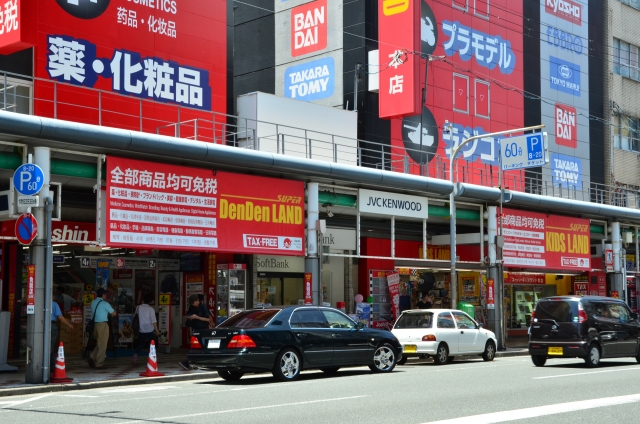
A short walk from Namba Station and Dotombori is Nipponbashi’s DenDen Town (電電タウン). DenDen Town is the Osaka equivalent of Tokyo’s Akihabara and used to be the city’s electronic hub. Nowadays, although still called Electronic Town, DenDen is known as the place to be for die-hard manga and anime fans. Comics, videos, games, cosplay costumes, and collectibles can be found in any of the many colorful stores. Besides manga/anime-related items, there are maid cafes aplenty. Every March the Nipponbashi Street Festa – a cosplay event with live music and dance performances.
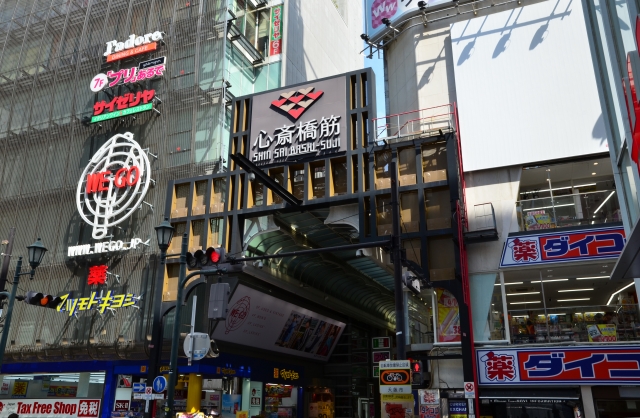
Shinsaibashi (心斎橋) and Amerika-mura (アメリカ村) are two of the major shopping district in Osaka. Shinsaibashi is more known for its contemporary department stores such as Chrysta Nagahori while Ame-mura gained fame for its American-imported clothes and items. Both are just a short walk away from Namba Station, on the other side of the Dotombori River.
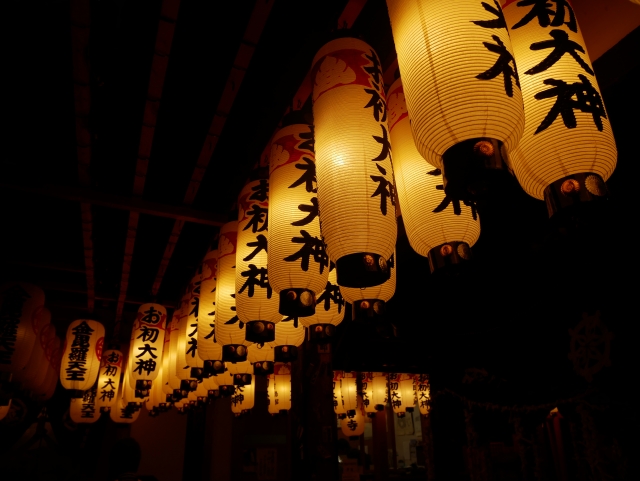
Besides the extremely neon-lit streets, the Namba area still has its historic area. Make your way to the Hozenji Temple and wander around the streets next to the temple. The area with its narrow lanes is called Hozenji Yokocho, and are reminiscent of the way Osaka was in the Edo Period (1600-1868). Hozenji Yokocho’s alleyways are filled with tiny bars and izakayas where you’ll share the space with mostly locals looking for a few drinks and some easy yakitori.
Osaka Castle Area
Besides being a colorful hub with plenty of shopping opportunities and eateries, Osaka has a long history. The city was even the capital of Japan over 1,400 years ago. The history is mostly exemplified by the impressive castle of Osaka (9:00-17:00, ¥600). Osaka Castle was built in the 16th century as a vestige for one of the ruling samurai clans in Japan.
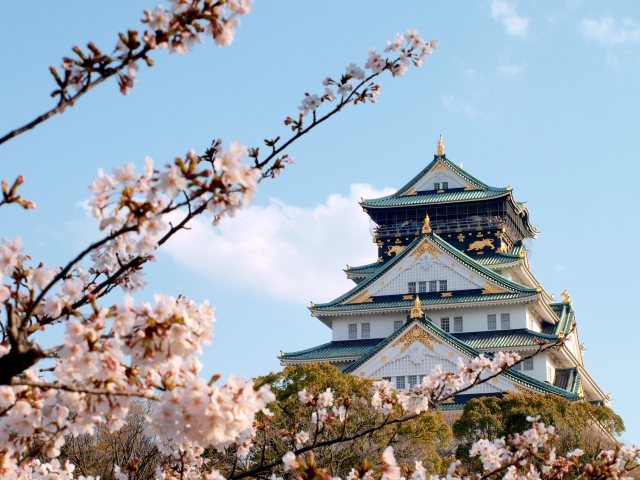
It is one of the most visited attractions in Japan, especially in late March to early April. That’s when the plum and cherry blossoms in and around the castle grounds bloom brightly.
Tennoji area
Many of Osaka’s district are modern, with stylized, tall buildings, the Tennoji district is typified by old-fashioned buildings that seems to be put together chaotically but are o-so charming. If you want to get a feel for Osaka in the 1950’s, this district is a must-visit.

It’s hard to miss the Shin-sekai area in Tennoji. Pass the tall Tsutenkaku Tower and you’re in the midst of an almost aggressively colorful and loud world. Shin-sekai (meaning New World in Japanese) is a retro area that was supposed to show the world Japanese modernity. Modernity however, moved too quickly, and Shin-sekai was left behind. The area has become fashionable again due to its retro feel and easy-access eateries and gambling shops.
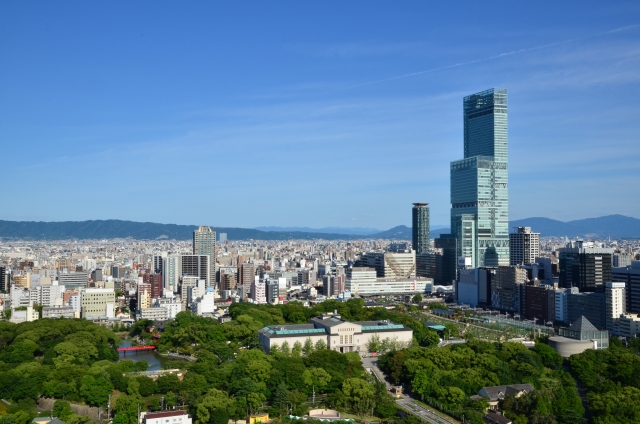
Adjacent to Shin-sekai is the Tennoji Park, a spacious green zone where you should go for people-watching. Osaka people are known for their colorful characters and here you can see Osaka’s finest walking around, singing karaoke, and more. Besides people, the park has a temple, a museum exhibiting art, and a small zoo.

The Tsutenkaku Tower (, ¥500) was originally built in 1912, and made to resemble the Arc de Triomphe at the bottom, and the Eiffel Tower at the top. The TV tower has long held the position as the central point of Osaka and as such, many restaurants with wildly colored signs were built around it. The tower has built-in souvenir stores and a museum dedicated to Kinnikuman (aka Muscle Man). The 4th and 5th floor of the tower are the observation decks.

The tower of Abeno Harukas has become the landmark of the Tennoji area and is the building that pushed the Tennoji District into the 21st century. You can go all the way to the top of the 300-meter-tall building and look out over the entire city of Osaka, Kobe, and surrounding areas. Besides being a viewpoint there are restaurant floors, and a museum, and the building has become the official countdown mark for New Year’s.
Osaka Bay area
As one of the world’s biggest aquariums, in the Osaka Aquarium Kaiyukan (10:00-20:00, ¥2,300) you’ll see marine wildlife from all sorts of environments in the Pacific Rim. You can view whale sharks, Manta rays, tortoises, spider crabs, and more in the massive tanks divided by area. There is an interactive area where you can touch and learn all about the sea creatures.
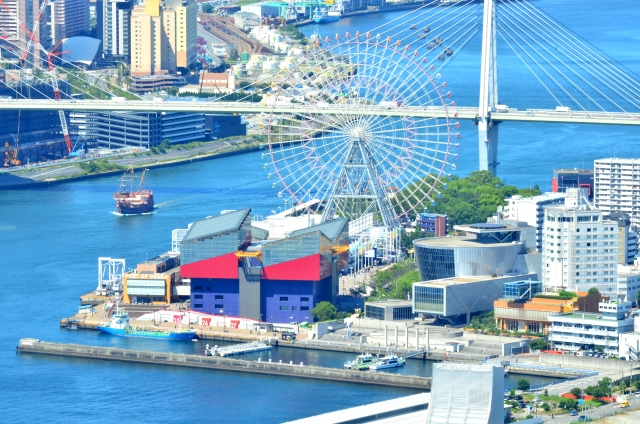
From the aquarium, you can take a ferry to Universal Studios Japan (9:00-20:00, ±¥7,000), a theme-park popular not only in Japan, but all around the world.
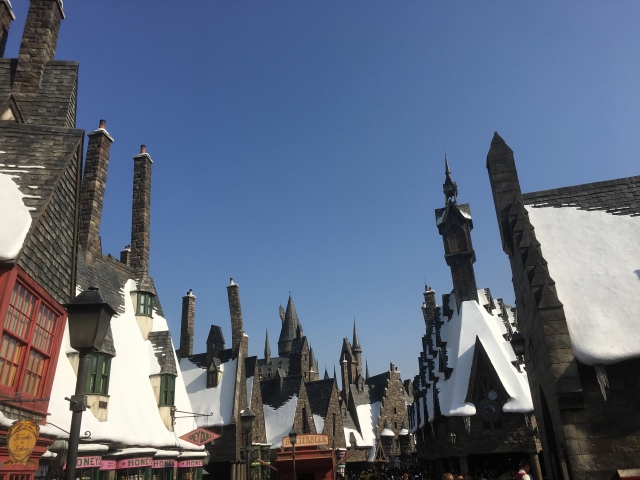
This theme-park is especially known for its Harry Potter World but there are many more area to discover. There are all sorts of rides and attractions, ranging from an easy roundabout, to a whirlwind ride that shows you the world from an upside-down viewpoint. The shows at USJ are as incredible as the rides and although crowded, worth a visit.
Festivals
Osaka has some of the grandest festivals in Japan, with the one to visit held for 3 days in July.

Osaka’s Tenjin Matsuri (July 25th) is together with Kyoto’s Gion Festival and Tokyo’s Kanda Matsuri, part of the 3 Major Festivals in Japan. Celebrated for 3 days, the festival features parade floats, boats, dances, and fireworks. Over 1.3 million people visit the festival on average so you will not be the only one in the crowd but it is an impressive sight to see.
Travel Tips
How to get to Osaka
Option 1: Tokyo → Shin-Osaka (±14,450)
1. From Tokyo Station to Shin-Osaka Station (2 hours 30 minutes):
Take the Tokaido Shinkansen* from Tokyo Station to Osaka Station.
*This Shinkansen is covered by the nationwide JR Pass (all trains except for the Nozomi).
Recommended Reads


